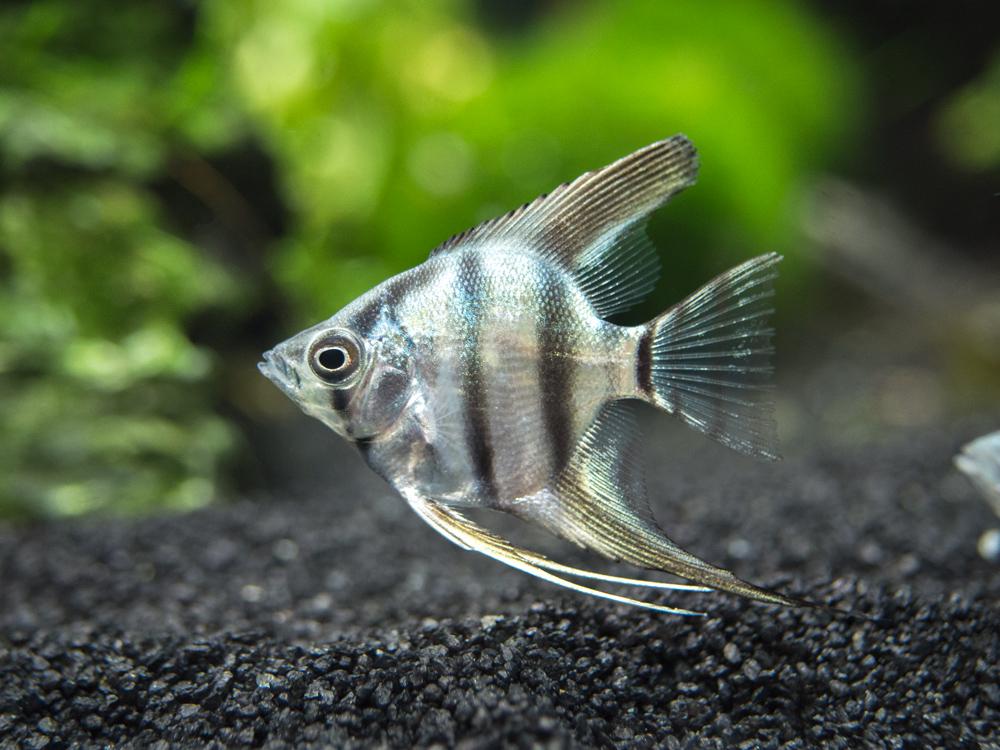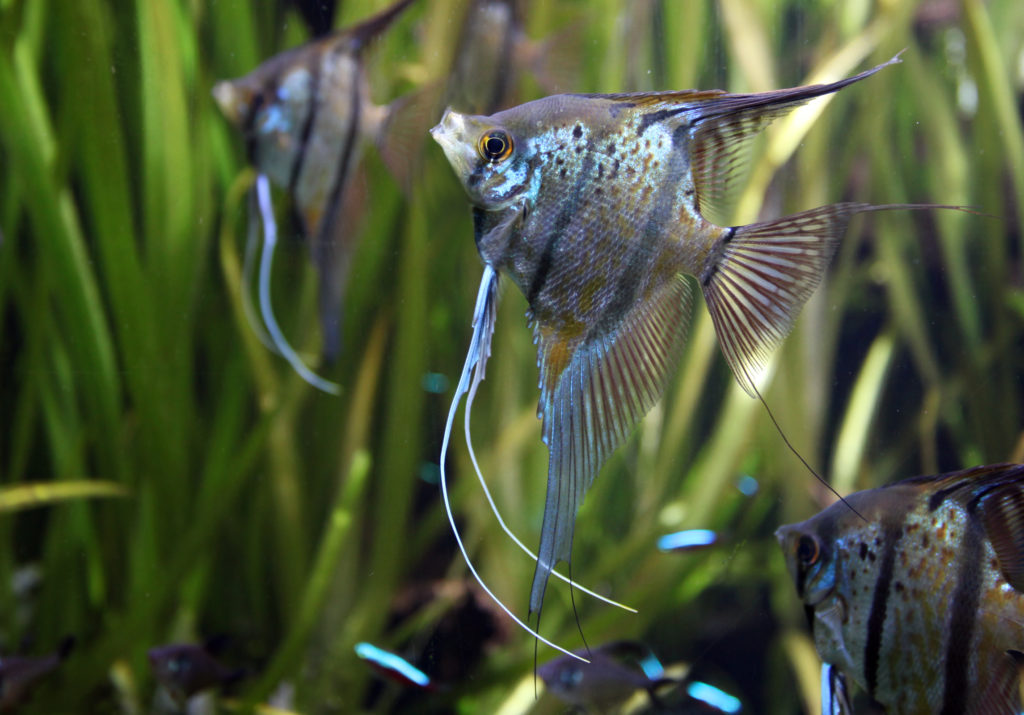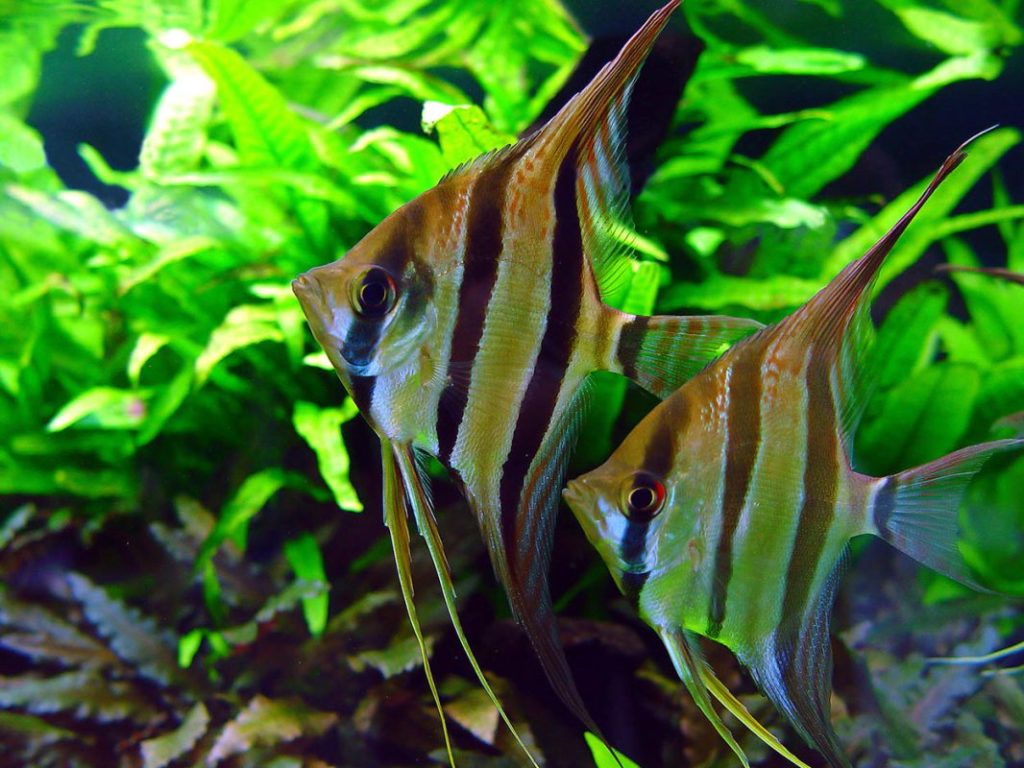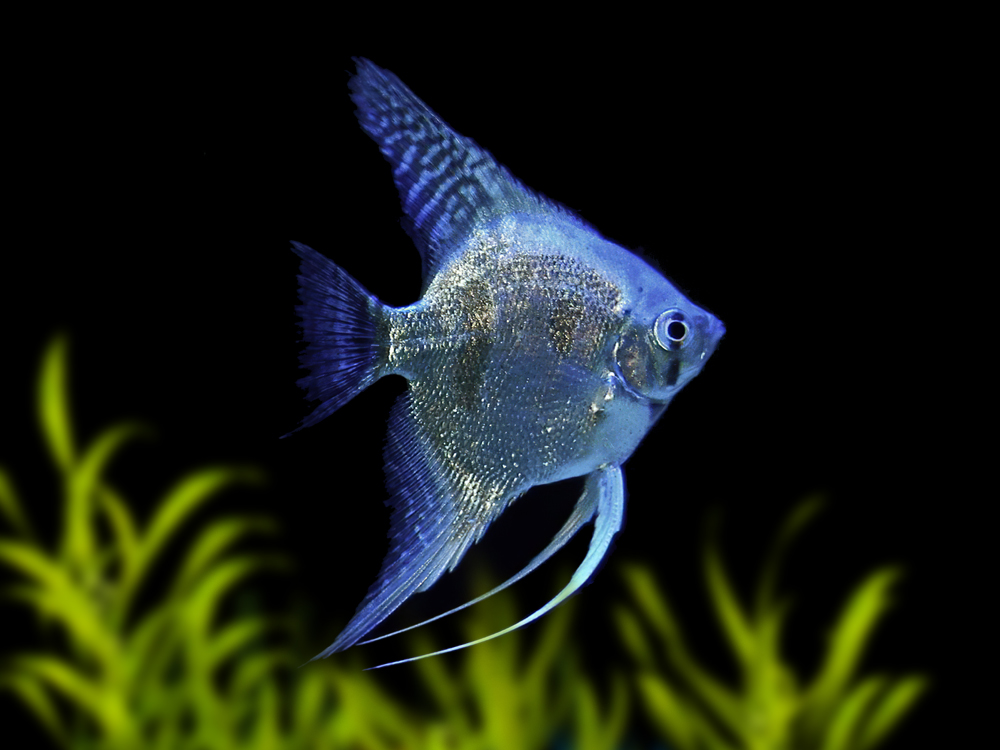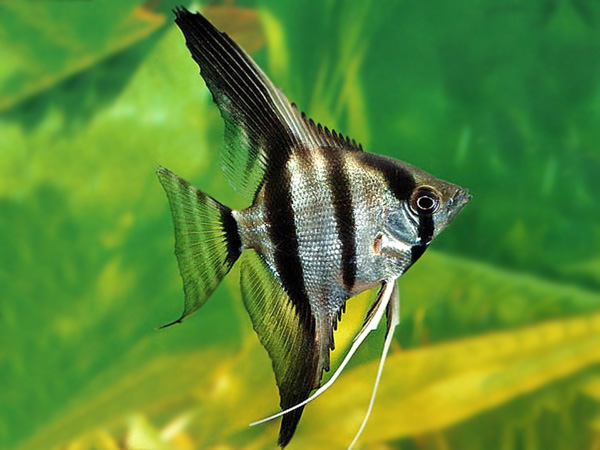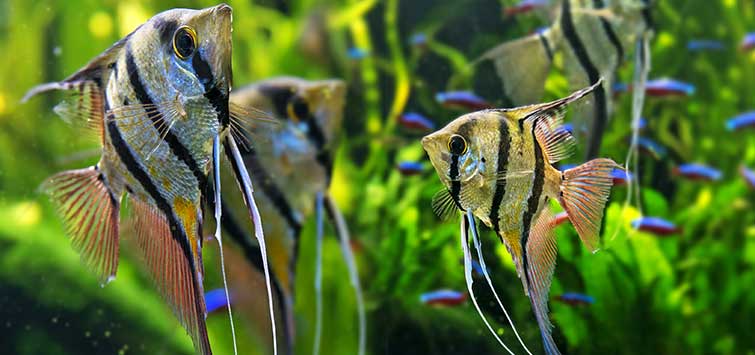Views: 2
Information
Pterophyllum scalare, most commonly referred to as angelfish or freshwater angelfish, is the most common species of Pterophyllum kept in captivity. It is native to the Amazon Basin in Peru, Colombia, and Brazil. Particularly to the Ucayali river in Peru, the Oyapock River in French Guiana, the Essequibo River in Guyana, the Solimões, the Amapá, and the Amazon rivers in Brazil. It is found in swamps or flooded grounds where vegetation is dense and the water is either clear or silty. Its native water conditions range from a pH of 6.0 to 7.0, a water hardness range of 3 to 10 °dH, and water temperature ranging from 26 to 30 °C (75 to 86 °F). This is the species of angelfish most frequently found in the aquarium trade. A similar (cross-breeding possible) P. scalare exists in the Orinoco. They are of the same size and shape, the only difference being its stripes: the Orinoco P. scalare has thinner, but dual stripes.
As in many aquarium fishes, inbreeding is a problem. There are many strange colours due to heavy inbreeding. In the wild this species is as strong as most other cichlids of similar weight, but in a lot of stores strong individuals are a rare occasion.
The diet of Pterophyllum scalare consists of a wide food spectrum; they feed on juvenile fishes, prawns, and worms. They feed on different types of worms such as Tubifex worms, vermicompost worms, and bloodworms, the tubifex diet are high in protein and nutrients for the angelfish resulting in high significant growth and live food diet provided better reproductive performance. Furthermore, the mosquito larvae is also a very nutritious live feed food.
First described by Hinrich Lichtenstein in 1823, First import to Europe (Germany) by C.Ziggelkow, Hamburg in 1909.
